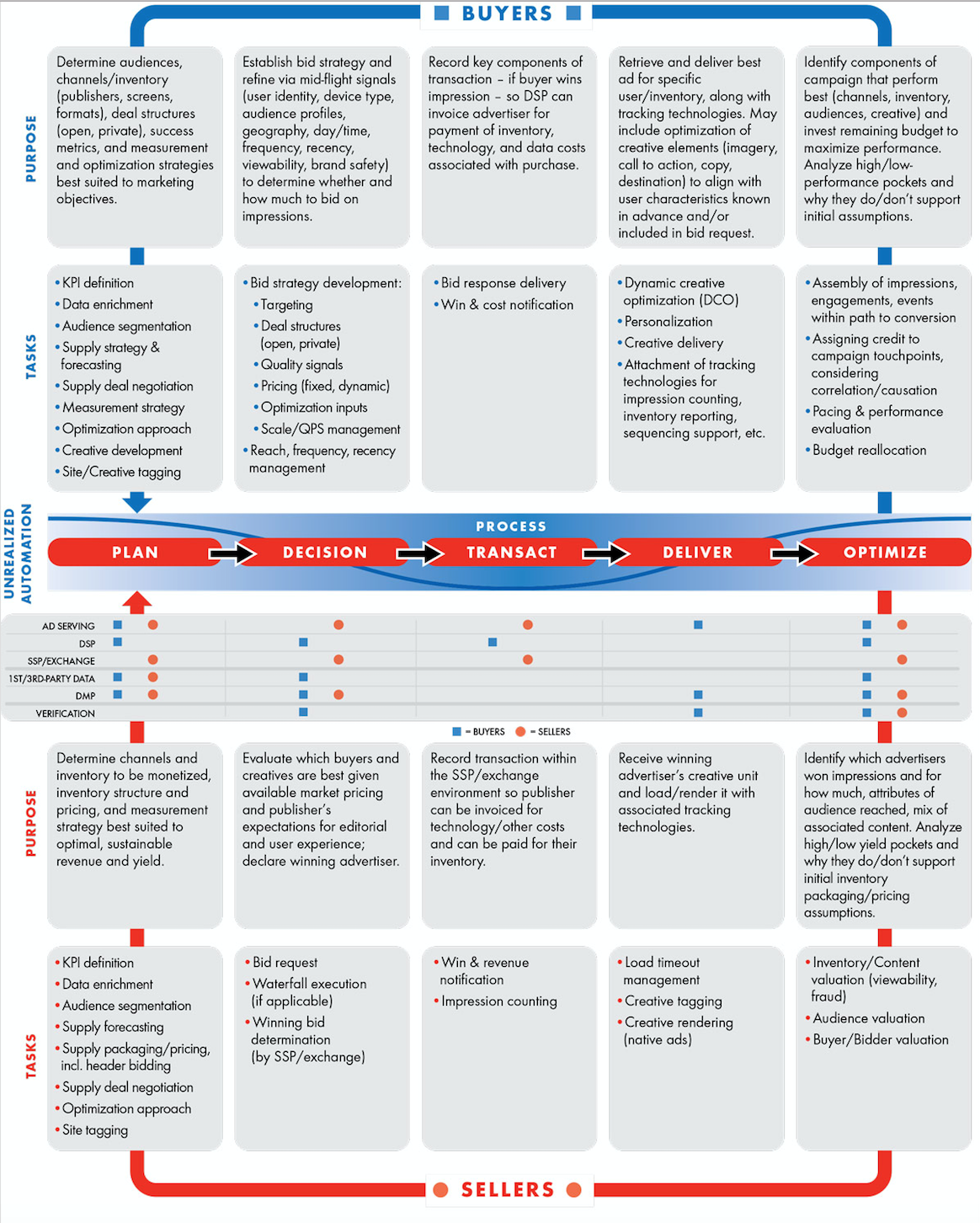When the Interactive Advertising Bureau (IAB) recently released a white paper on programmatic selling and buying, the questions were aplenty after several media experts noticed numerous uses of the word “automation” rather than the passionately defined, and now more acknowledged, term “programmatic.”
Building from years of changing definitions, varied uses, confusion, and some flat-out contentious conversations, the majority of advertisers and publishers can now agree what programmatic actually means in the digital space: the use of data for purchasing media. Because of this progress experts are wondering why on earth a change in name for this type of media buying to such a traditional and rather boring word – we do like fun nomenclatures – would be beneficial.
Plus, the word “automation” already has a nice fit within our lexicon. It’s called marketing automation – a way to more effectively complete repetitive tasks and efficiently distribute relevant content.
Automation in media buying sounds ideal, but the fact remains that manual, and human, involvement is still required for this tactic. Here is how programmatic works:
After a consumer has clicked on a webpage, while the publisher’s site is loading, the ad exchange is matching the ad buyer’s needs with the seller’s and determining the best price. A bid request provides potential bidders a set of information about exactly how attractive a consumer might be to the advertiser. In milliseconds, the bid is decided using a variety of inputs and considerations, such as, new or returning consumer, past behaviors, responsiveness of ad types, and quantity of historical data to inform the bid model. An algorithm is applied, and the bid is set. The right ad is shown to ideally stir the behavior desired – a quality action.
From the IAB:

While the automation portion plays a role in the snap decision on the bid model, manual inputs and performance analysis are still a key part of a successful campaign. Does the cost paid for the quality action align with current budget parameters? Do more new- and upper-funnel consumers need to learn about the brand first before they would even think about let alone consider going to a different site than their usual habits of sites past? Is the segmentation converting at a rate we are happy with during a specific time period? These questions can only be fully answered with human thought using real-time analysis and constant monitoring in-campaign plus the inclusion of pre- and post- data for complete insights and gauging the level of success of dollars spent.

